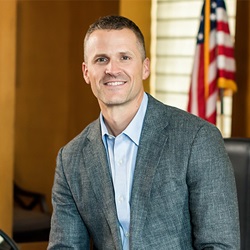South Dakota's largest city is taking a big step forward to modernize its transit — including an innovative way to recalibrate bus routes on the fly to handle demand.
Sioux Falls Mayor Paul TenHaken created an Innovation and Technology Department and launched the Transit Innovation Project with 14 city employees across nine divisions to figure out how to expand and improve public transportation for the city's 176,000 people.
Now TenHaken, who only became mayor 14 months ago, filled a new data analyst position with 29-year-old Harvard University graduate student, Nico Diaz, who is assisting city officials to build financial models for the next phase of public transit.
"He's been a huge breath of fresh air for perspectives because sometimes you get bogged down working on a project," Jason Reisdorfer, director of the Sioux Falls Innovation and Technology Department, told the Associated Press.
Diaz is out west on a 10-week pilot program thanks to the Harvard Kennedy School and its Bloomberg Harvard City Leadership Initiative which provides management and leadership training for city mayors and pays for Harvard students to tackle systemic urban problems involving housing, education, and transit.
"I wanted to come to a city that's already doing a lot of cool stuff with innovation," Diaz told the Argus Leader. "And Sioux Falls is, so that motivated me to come."
Sioux Falls is in the middle of an eight-phase overhaul of its transit system that would shift is fixed route bus service to an on demand system, allowing vehicles to change their routes based on passenger needs rather than a fixed line or schedule. Instead of running 12 routes on a "hub and spoke" system with two bus depots which can require multiple transfers, the Sioux Falls Metro is considering a square or circular-shaped route supplemented by on demand service to cover its 78 square miles.
About 63 percent of transit riders in Sioux Falls use smart phones, allowing them to use an app to schedule their bus rides, but the other 37 percent would need an option to pay cash fare at a nearby kiosk or on board, city officials found in a 2017 survey of bus riders.
The project impressed Kennedy School officials enough that they sent the Bloomberg fellow to work on it. After interviewing bus riders, motorists, and business leaders, Diaz and city officials are conducting a financial analysis of transit services to see whether an on demand system would benefit South Dakota transit users.
Sioux Falls leaders are also carefully watching how the state divvies up transportation funding in the future. Over the next two years, South Dakota will allocate transit funding based on performance — such as number of rides, miles driven, and local funds spent on a program — giving municipalities an incentive to improve.







